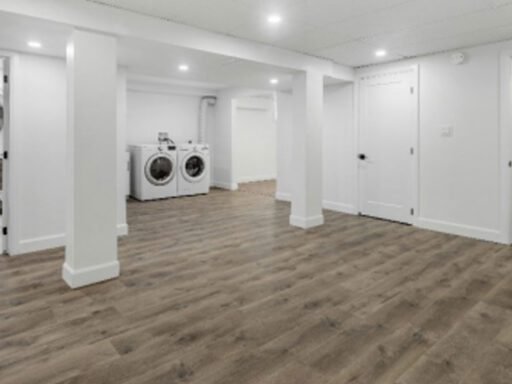Most people spend most of their time indoors, yet many homes still fail to provide real comfort. Families often put their money into surface upgrades, such as new cabinets or flooring, while ignoring the elements that actually affect how a home feels. A house may look stylish, but if the air feels stuffy, the rooms are drafty, or the temperature is never quite right, it can leave everyone unsettled.
The idea of “comfort” goes beyond having a soft sofa or pretty curtains. It involves the air you breathe, the temperature you live in, and the way your space supports daily life. A comfortable home improves health, saves money, and even adds value to your property. In today’s world, where people are working, learning, and relaxing indoors more than ever, comfort is not a luxury—it’s a smart investment.
Seasonal Comfort Prevents Stressful Surprises
Extreme weather often reveals how comfortable a home really is. A sudden heatwave or cold snap can overwhelm older systems and leave families struggling to cope. Preparing ahead of time reduces stress and avoids costly emergency fixes.
Regular maintenance of heating and cooling systems, sealing drafts, and improving insulation make seasonal changes easier to manage. This also helps you stay prepared by showing you when its time to upgrade your AC or heating system.
Seasonal comfort is about staying prepared so that families can enjoy peace of mind instead of scrambling to fix problems when it’s too late.
Comfort Shapes Your Health Every Day
Comfort has a direct effect on health, though it is often overlooked. If a home is too hot, too cold, or poorly ventilated, it can disturb sleep and weaken the immune system. Poor air circulation allows dust and allergens to build up, making conditions like asthma and seasonal allergies worse. Inconsistent temperatures can cause fatigue and stress, while constant noise from outside can impact focus and rest.
A comfortable home provides stable conditions that help the body recharge. Clean air, proper humidity, and steady indoor temperatures reduce strain and keep the body balanced. When these needs are met, people sleep better, wake up refreshed, and feel more at ease throughout the day. Comfort is not only about convenience—it plays an active role in overall wellness.
Efficiency Creates Both Comfort and Savings
One of the clearest links between comfort and smart living is energy efficiency. A well-insulated home stays warm in the winter and cool in the summer without forcing systems to run endlessly. Energy-efficient windows, doors, and appliances reduce wasted power and bring down monthly bills.
Comfort is not just about the immediate feeling of relief but also about how sustainable that relief is over time. Families who invest in efficiency upgrades often notice that rooms feel more consistent in temperature and that energy bills no longer spike with each season change. By lowering wasted energy, comfort becomes both a financial and environmental win.
Technology Brings Comfort Under Your Control
Smart technology has changed the way homeowners approach comfort. Devices such as smart thermostats, air quality monitors, and automated blinds allow people to fine-tune their living spaces with precision. With a few taps on a phone, it’s possible to adjust the temperature, set schedules, or monitor energy use in real time.
These tools do more than add convenience. They give homeowners better insight into how their homes function and allow for faster adjustments when conditions change. This makes comfort not just easier to achieve but also more personalized. Instead of settling for a one-size-fits-all environment, technology makes it possible for every household member to feel comfortable in their own way.
Comfort Supports Focus and Productivity at Home
The way a home feels can directly influence how well people work or study. Remote work and online learning have shown that comfort is not just a luxury but a necessity for productivity. When a room is too warm or too cold, concentration quickly drops. Noise from outside or uneven lighting can also affect focus, making even simple tasks harder to complete.
Studies have found that indoor temperatures can affect productivity levels. Proper lighting, quiet spaces, and good air circulation create conditions where people can think clearly and work without distraction. A comfortable environment reduces fatigue, improves focus, and supports healthier work-from-home routines.
Comfort Creates a Lifestyle Upgrade for Families
Comfort extends beyond physical health and work performance—it shapes how families enjoy daily life. A home that maintains steady temperatures, clean air, and quiet rooms is more welcoming and relaxing. Families tend to spend more time together in shared spaces when those areas feel inviting and stress-free.
For example, a well-insulated and climate-controlled living room becomes the natural center for family activities. Bedrooms that stay quiet and cool at night help children and adults get better sleep. Over time, these improvements add up to a better quality of life. Comfort turns the home into a place people look forward to spending time in, instead of a place they just pass through.
Comfort Upgrades Increase Property Value
Modern home buyers pay close attention to comfort features. A house that already has energy-efficient windows, new HVAC systems, or smart climate controls is more attractive on the market. Buyers often view these upgrades as long-term savings and are willing to pay more for them.
According to a report, energy-efficient homes command higher prices compared to similar homes without upgrades. Comfort features are no longer seen as extras—they are viewed as essentials. When homeowners invest in these improvements, they are not just creating a better space for themselves but also raising the value of their property.
Affordable Steps to Start Improving Comfort
Investing in comfort does not always require large renovations. Small steps can make noticeable differences. Adding blackout curtains helps regulate indoor temperatures and improve sleep. Upgrading air filters improves air quality quickly and affordably. Smart plugs and thermostats help reduce wasted energy while giving more control over indoor conditions.
Even simple actions like sealing leaks around windows and doors or using ceiling fans can enhance comfort. These changes cost less than major upgrades but still deliver results. Starting with small, affordable improvements makes it easier for homeowners to build toward larger investments over time.
Comfort should not be treated as an afterthought when it comes to home improvement. It affects health, productivity, energy bills, and even the future value of a property. Investing in comfort creates lasting benefits, from better air quality to lower costs and improved quality of life.
Every homeowner has options, whether it’s through small, affordable steps or larger system upgrades. The key is to view comfort as an investment that pays off daily and continues to provide returns over time. By making choices that support comfort today, families create homes that are healthier, more efficient, and more enjoyable for years to come.






